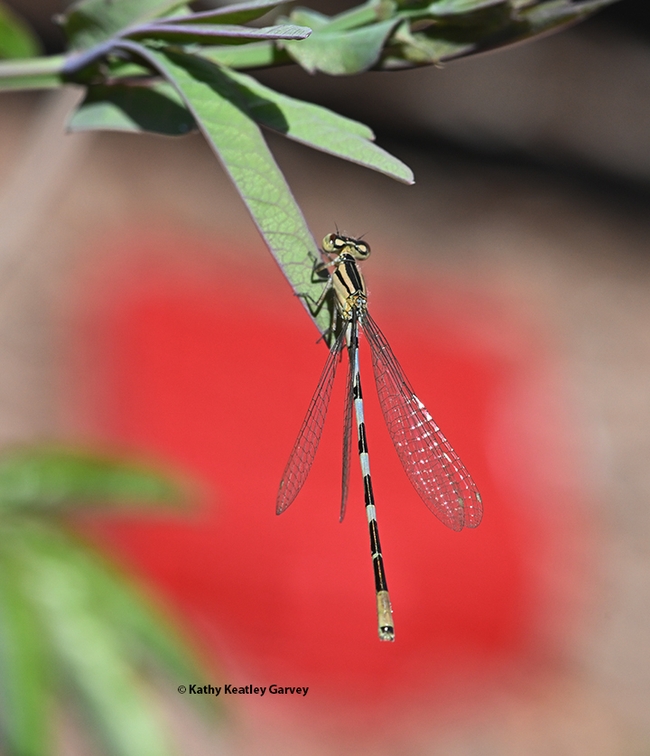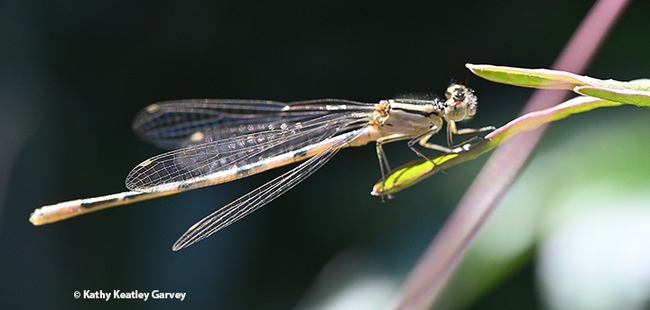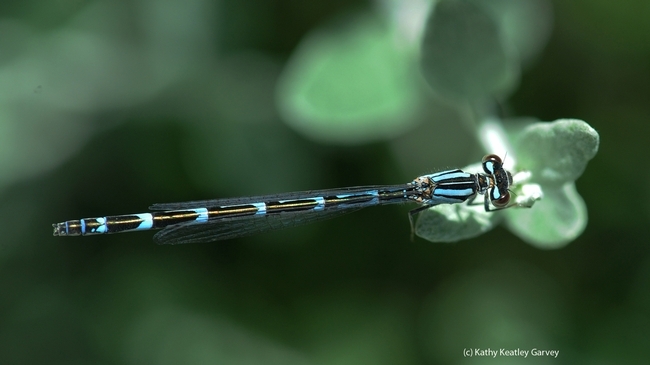If you like your insects long, slender and delicate, and resembling a flying neon needle, the damselfly is for you.
Who can resist watching them and photographing them?
The common blue damselfly or Northern Bluet (Enallagma cyathigerum) is as thin as a needle, a jeweled blue needle.
We've seen them hover in our yard, like mini-helicopters--oops, make that "skinny mini" helicopters--and then touch down on a leaf to feast on small insects.
Damselflies share the same order, Odonata, as their larger cousins, the dragonflies. As any entomologist will tell you, damselflies belong to the suborder Zygoptera, and dragonflies, Anisoptera. They are an ancient group, with fossil records showing they existed at least 250 million years ago.
Odonata means "toothed" and Zygoptera means "paired wings."
Damselflies are no "damsels in distress." They're daytime hunters that "consume large quantities of other insects such as flies, mosquitoes and moths and some eat beetles and caterpillars," according to a Texas A&M University (TAMU) website.
Some other facts on the TAMU site:
- In prehistoric times, dragonflies and damselflies were as huge as hawks and were "the largest insects to ever live."
- Worldwide, there are more than 4700 species of Odonata, with Zygoptera accounting for a third fo them
- Males of most damselfly species are brighter-colored than females
- Damselflies neither bite nor sting.
The UC Statewide Integrated Pest Management (UC IPM) describes damselflies this way: "The head is narrow with bulging eyes, long antennae, and tubular-sucking mouthparts. The legs are long and the front pair are slightly swollen with inconspicuous spines. Adults and nymphs can move rapidly when disturbed or stalking prey."
A photography tip: if you spot a damselfly, approach it with your camera already raised. A sudden movement may spook them.
Attached Images:

This damselfly appears framed "in the red" (a red vehicle light). (Photo by Kathy Keatley Garvey)

The damselfly is long and slender and is sometimes called "the devil's darning needle." (Photo by Kathy Keatley Garvey)

The common blue damselfly or Northern Bluet (Enallagma cyathigerum). (Photo by Kathy Keatley Garvey)